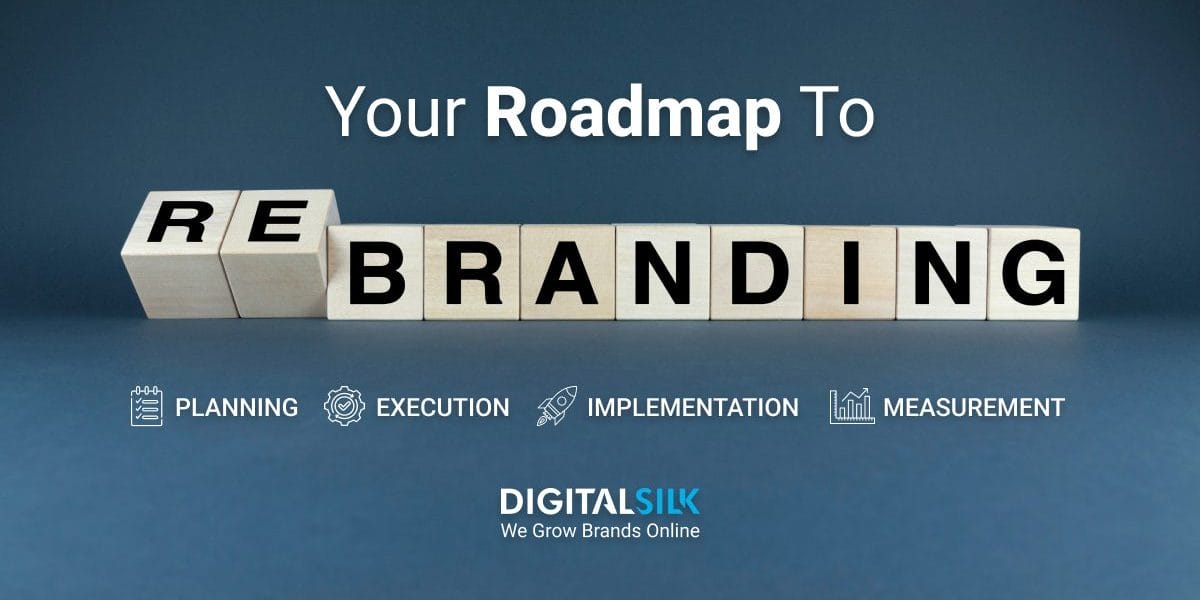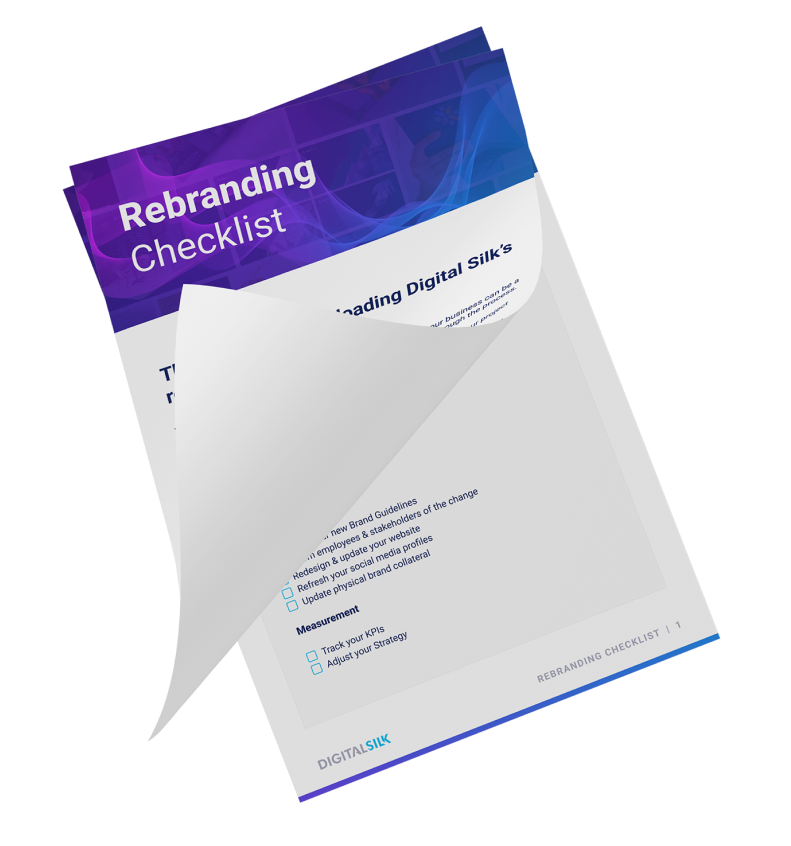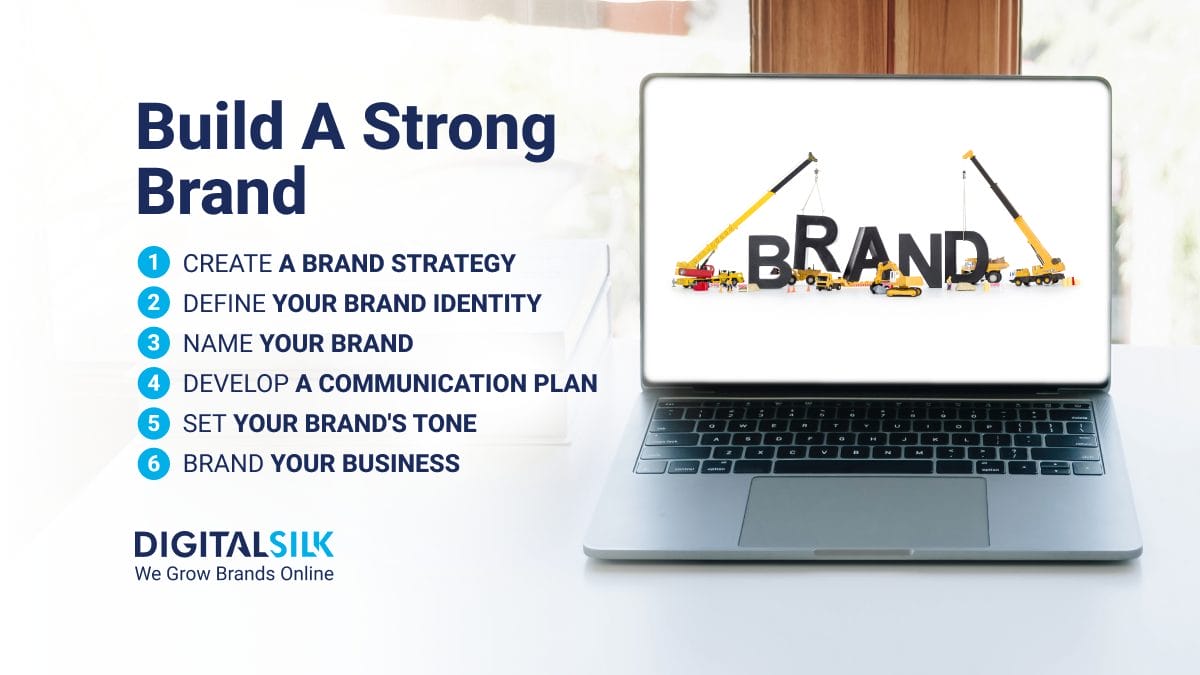81% of consumers need to trust a brand before making a purchase.
In today’s market, trust is paramount.
Whether a simple refresh or a complete overhaul, a rebranding strategy can help address your company’s current pitfalls to produce boost to your brand value.
Our 20-step rebranding checklist is designed to guide you through this process to ensure no stone is left unturned and no opportunity is missed for your brand.
The checklist is divided into four manageable sections to tick off as you go:
- Planning
- Execution
- Implementation
- Measurement
We also discuss why your business may need to rebrand and showcase top-level rebranding examples from our branding specialists at Digital Silk.
20 Rebranding Checklist Steps
Check out the 20 steps in our comprehensive rebranding checklist to understand how your business can enhance its brand value.
Make sure not to skip any part of the rebranding process with our free, downloadable rebranding checklist template.
Click the link below, print the checklist and tick off each item as you go. This way, you can be confident your business has done all it can to reconnect with your audience and restructure your brand identity to grow the wider value of your brand.
A. Planning
Planning is an important first step to ensuring your rebranding strategy has strong foundations that set the course for success:
Step 1. Identify Why Your Rebrand Is Necessary
Identify the key reasons behind your rebrand to effectively guide your strategy.
When you analyze the reasons behind your rebrand, you can determine the extent of changes needed and assess whether a rebrand is necessary at all.
Questions to ask at this stage can include:
- Are you targeting new audiences?
- Has a new competitor forced you to reconsider your own brand?
- Are you shifting perceptions?
We’re experienced branding specialists. Request a Quote
Step 2. Establish Measurable Goals
Set clear, quantifiable goals for the rebrand.
These might include increasing market share, improving brand awareness or enhancing customer engagement.
As your rebranding project moves forward, measurable goals help track progress and evaluate success.
Step 3. Audit Your Current Brand Touchpoints
Brand touchpoints are all the interactions people have with your business.
The way your brand presents itself across your touchpoints is a crucial driver in promoting your brand identity.
Identify which of your current brand touchpoints need updating or improving to align with the values you want to showcase.
Examples of touchpoints to consider include:
- Business cards
- Training materials
- Invoices
- Presentations
- Signage
Step 4. Consider The Scope Of Your Rebrand
Every business must understand the purpose and target audience of their rebranding efforts. Rebranding can take various forms to create a fresh image, driven by current needs.
The four common types of rebranding include:
- Product rebranding: Refreshing or redefining the brand identity of a specific product to better appeal to its target market
- Service rebranding: Updating or reinventing the brand image of a service to enhance its market position and customer perception
- Corporate rebranding: Overhauling your entire company’s brand identity, reflecting changes in vision, mission and values to improve overall market presence
- Employer rebranding: Reshaping your image as an employer to attract and retain top talent, ensuring the brand resonates well with current and potential employees
Step 5. Find Branding Specialists
Partnering with branding specialists for your rebranding project is the best way to achieve high-end results.
Through a blend of expertise, innovation and experience, branding agencies can assess your situation and deliver a rebranding strategy that gets measurable results.
To find the best branding agency:
- Search online directories like DesignRush for specialist branding agencies.
- Select the agencies with a high-quality portfolio and testimonials from brands within your industry.
- Set up a consultation call to share your requirements, share ideas and see whether the agency will have a strong working relationship with your brand.
B. Execution
The next phase of your rebranding project is its execution:
Step 6. Analyze Your Market & Trends
Using analysis of trends within your market will ensure the choices you make have a positive impact.
Use market research tools and reports to understand current trends, customer preferences and industry shifts before adjusting your brand identity to fit.
Achieve this by using:
- Surveys: Create first-hand questionnaires to gain direct insights into what your target audience is looking for from brands like yours.
- Social listening tools: Subscribe to software like Brandwatch that can track social media mentions to see what people are saying about topics related to your industry.
Step 7. Study Competitors & Create A Positioning Map
Use brand monitoring tools and analyze the touchpoints of rival brands to learn the perception and approach of successful competitors while identifying gaps within your market.
Then, create a brand positioning map to visualize where your brand fits in the market and identify opportunities to differentiate your brand.
Build your positioning map by creating an X and Y axis of two key unique value propositions (UVPs), such as price and quality. Then, place your competitors along the scale where their offerings sit.
While you can use online tools like Miro to create your map, a whiteboard or piece of paper is just as valuable to create a rough outline.
Step 8. Revisit Your Target Audience Personas
Target audience personas are a valuable way to visualize your different segments.
Following a repositioning, you may need to update the personas to reflect changes in buyer demographics, psychographics or behavior.
Use customer data from tools like Google Analytics or Sprinklr to create detailed profiles of your market segments. Include demographics, goals, behaviors, and challenges to better understand your audience.
This can help you craft personalized user experiences through targeted messaging or conversion funnels for your different customer segments.
Given that 40% of people are more likely to spend more than their initial budget after a personalized shopping experience, adopting this strategy post-rebrand can significantly increase your revenue.
Step 9. Update Your Mission, Vision & Values
If undergoing a complete brand overhaul, you’ll need to reevaluate and refine your mission, vision and values to align with your new brand direction.
These elements should reflect your brand’s purpose and guide all strategic decisions.
First, look at the values you wish to portray and where you want this rebrand to take you within the next five years. Then, write out a short sentence for your mission, what you want to achieve and vision, depicting where you want to be.
Step 10. Redefine Your Brand Voice & Tone
90% of senior marketers in the U.S. think brand voice is important to business success.
Establishing a consistent tone and voice that reflects your new brand identity is an important step to showcase any changes to your target audience.
To redefine your brand voice:
- See what tone of voice resonates best with your new audience preferences by checking language uses on social media.
- Check your new values and purpose to ensure these come across in all new messaging.
- Attach an updated personality to your voice that targets example buyers from your audience personas.
- Ensure consistency by updating your brand guidelines and sharing any new rules with all involved in content creation or customer interaction.
Step 11. Establish Your New UVP
If you’re repositioning your brand or altering your products and services, you’ll need to reestablish your UVP.
Define a clear, compelling UVP that highlights what sets your brand apart from competitors.
Use customer feedback and competitive analysis to craft a UVP that communicates the unique benefits and value your brand offers.
Step 12. Develop Communication Strategies
Using the data gathered in the planning stage, outline where your target audience is most likely to come into contact with your brand.
Develop communication strategies for these different channels, including social media, email and advertising, to ensure a consistent and cohesive brand message.
Consider creating one large piece of in-depth content, like a white paper or long video. Then, break this up into smaller videos, social media posts and blog articles to efficiently deliver your updated content to a wider audience.
Step 13. Design Or Refresh Your Logo
Three in four U.S. customers think that a logo makes or breaks a company.
If your logo doesn’t align with your intended brand identity or represents an outdated design trend, it’s time for an update.
Work with experienced graphic designers to brainstorm ideas for your new logo that incorporates the essence of your brand and what you’re trying to achieve.
Ensure your new design is versatile, scalable and aligns with your brand’s visual identity.
C. Implementation
Ensuring your rebrand is thoroughly carried out is vital to the process.
During the implementation phase, make sure to:
Step 14. Create Your New Brand Guidelines
Develop comprehensive brand guidelines that include your visual identity, such as color palette and typography, and brand strategy elements like mission, vision personality and tone of voice.
This way, everyone working with your brand has a document to check when working on future projects and immediately understands what your brand is all about.
Include rules and usage examples to ensure brand consistency, including clear dos and don’ts on brand usage including colors, fonts and imagery.
Step 15. Inform Employees & Stakeholders Of The Change
70% of employees who feel aligned to their company’s values are likely to recommend their employer as a great place to work.
Communicating your rebrand to employees and stakeholders not only supports brand consistency but keeps those important to your business informed about any updates. This transparency can keep everyone aligned and motivated by the new direction.
Provide training, presentations and resources to help them understand and embody the new brand identity.
Step 16. Redesign & Update Your Website
Your website is a vital touchpoint for visitors to understand and appreciate your new brand identity.
Whether enlisting the support of an expert web design agency or using in-house web designers, ensure the design, content and user experience align with your updated brand guidelines and messaging.
Some ways to improve your website after a rebrand include:
- Adding updated graphics, images and icons related to your new logo and visual identity
- Reworking content and messaging to better connect with your new target audience or visitors with less awareness of your updated brand
- Including social proof, testimonials and case studies to drive credibility and authority
Step 17. Refresh Your Social Media Profiles
The number of social media users worldwide is set to top six billion by 2028.
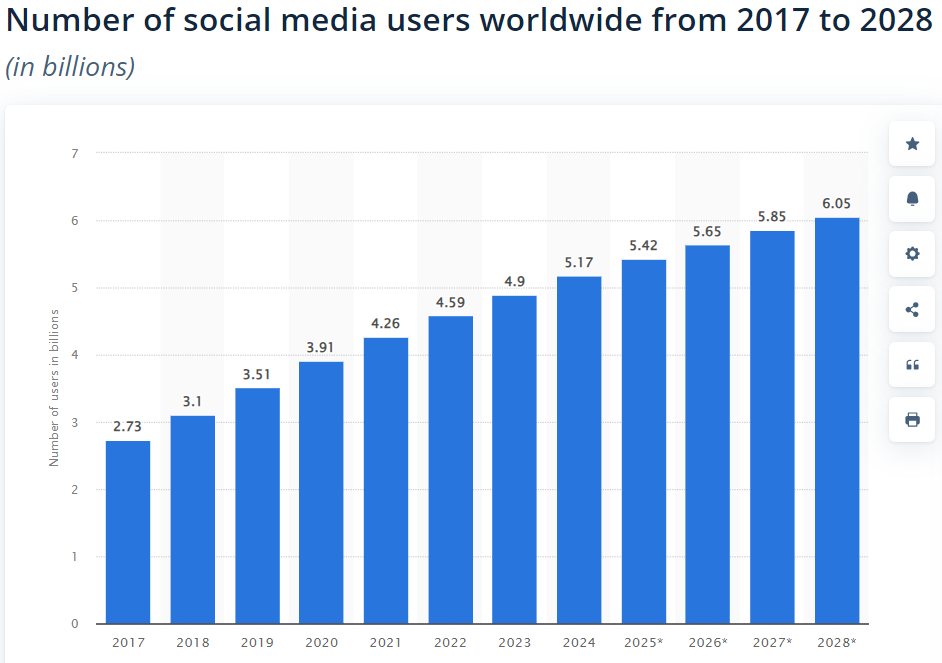
This makes your social media profiles a crucial brand touchpoint that must represent your updated brand and visual identity.
Refresh your social media profiles with new visuals, bios and content strategies that reflect the rebrand.
Use your brand guidelines to ensure consistent imagery, tone and messaging that reinforces your new brand identity across all platforms.
Step 18. Update Physical Brand Collateral
Refresh all physical brand collateral, including business cards, packaging, signage and promotional materials.
Ensure they all reflect the new brand identity and guidelines, maintaining consistency and recognition.
D. Measurement
Once the rebrand has been implemented across your business, it’s time to track its performance and adjust it toward success.
Step 19. Track Your KPIs
Use analytics tools to monitor previously established KPIs like sales, brand awareness and market position.
Regularly review these metrics and adjust strategies to ensure success and alignment with rebranding goals.
Implement tools like Google Analytics and social media analytics to gather data, establish a baseline and compare post-rebrand performance.
Step 20. Adjust Your Strategy
Adjust your strategy based on KPI tracking to address shortfalls or capitalize on successes.
Conduct regular strategy meetings with stakeholders to review progress and make evidence-based adjustments.
Stay updated with market trends and customer feedback to continuously refine your brand, ensuring it remains competitive and relevant. Rebranding is an ongoing process of improvement and adaptation.
Meet our team. Schedule A Consultation
3 Successful Rebranding Examples To Inspire Your Project
Our team at Digital Silk have delivered countless successful rebrands.
Three of our favorites include:
1. CrawlSF
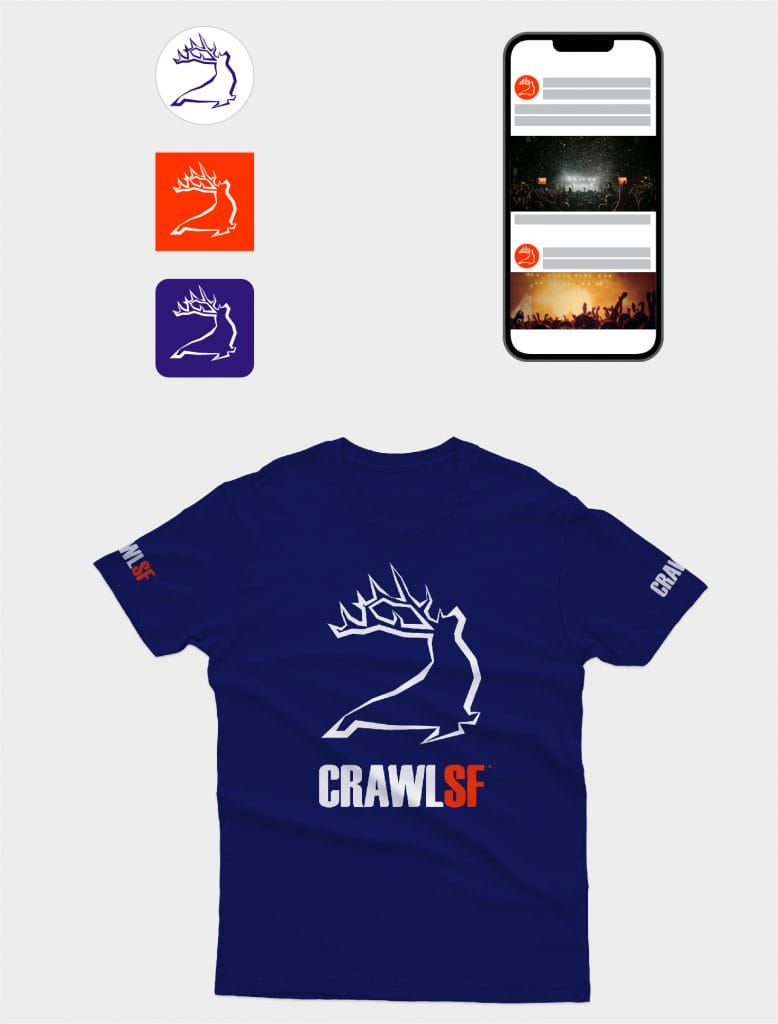
Our team delivered a new logo design and visual identity to support brand growth for CrawlSF, a San Francisco-based event company.
We helped CrawlSF express their “Experience Francisco Like a Local” promise through visual design, messaging and website launch.
2. Frontier Auto Parts
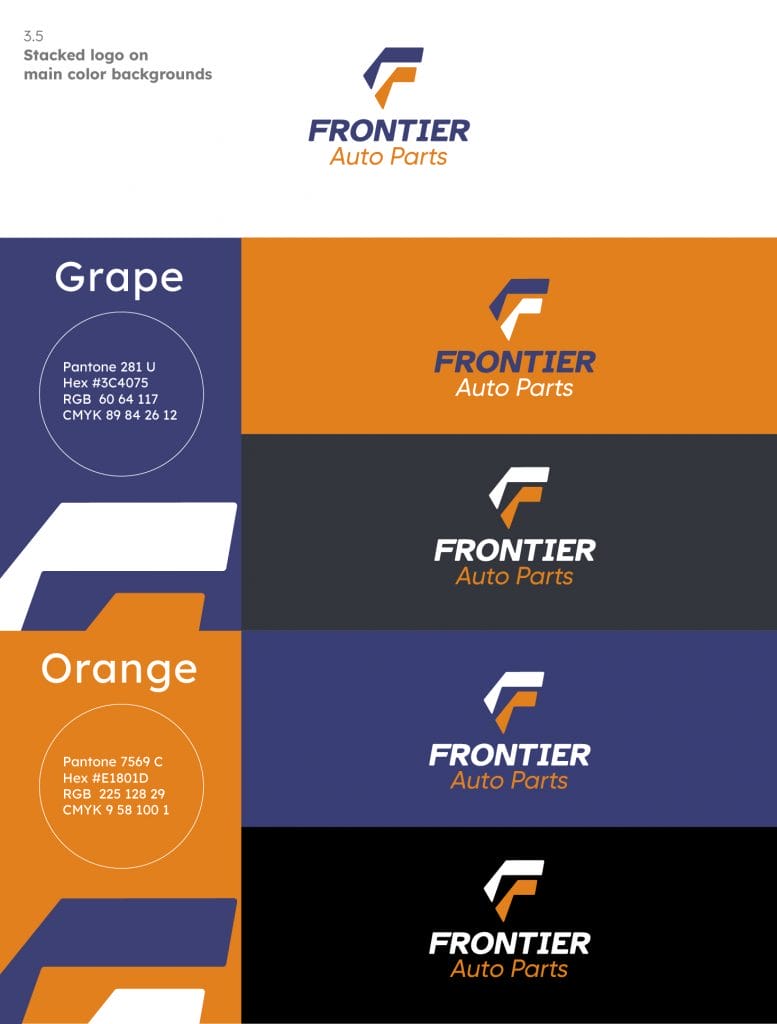
We created a strong, distinctive identity for automotive company Frontier Auto Parts through an extensive rebranding process.
Aiming to drive associations of efficiency and reliability across touchpoints, our team delivered a fresh visual identity over various branded collateral including wall graphics, employee uniforms, van design and stationery.
3. Opto
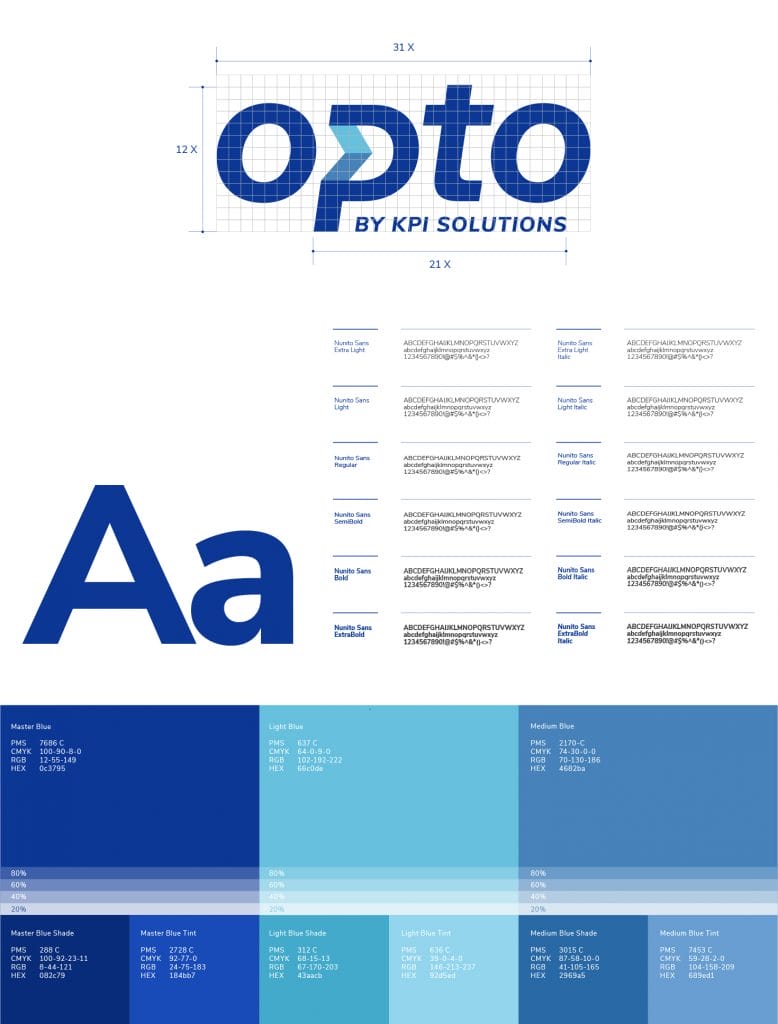
We created a new name for the corporate arm of KPI Solutions, a warehouse operations management company.
Alongside an accompanying logo and visual identity, the switch from KPI-S to Opto helped reposition its corporate services as a standout solution separate from the wider KPI brand.
We’re experienced branding specialists. Request a Quote
Does Your Business Need A Rebrand?
There are multiple reasons why your business might need to use a rebranding checklist.
Your business may need to rebrand if you:
1. Operate An Outdated Brand
Does your brand feel outdated? Or, more importantly, do people say your brand is outdated through social channels or forums?
If so, your brand is disconnected from your target audience and losing relevance against your competition.
And you’re not alone. According to a survey conducted by Bynder, updating brand identity is the most common reason for rebrand, listed in 57% of responses.
Rebranding allows you to modernize your brand identity, messaging and visuals to better align with contemporary tastes and remain competitive.
See the logo evolutions of Pepsi below, not including the most recent 2023 edition. While the changes may seem minor, each logo refresh is designed to better align the brand to current design trends and values.
2. See Changes In Consumer Behaviors Or Preferences
Consumer behaviors, values, and preferences can shift, either aligning more closely with or moving away from your brand identity. A rebrand helps to recognize and act on these changes.
Rebranding enables you to adapt your brand to evolving consumer mindsets, ensuring it remains appealing and resonates with your target market.
Take Birkenstock, for example. Once known as a styleless shoe for hippies, Birkenstock capitalized on a recent increase in the demand for comfort over appearance.
By changing its approach to brand collaboration and partnering with brands like Dior, Birkenstock soon saw its footwear on the feet of Milan Fashion Week guests.
Today, Birkenstock has reinvented its image from secret sandals to luxury fashion accessories and has boosted brand value to over $8 billion.
3. Aim To Reposition
74% of marketing executives aimed to reposition their brands in 2023. Increasing market share and improving brand perceptions were the two main reasons behind this approach.
Whether targeting a new market segment, offering different solutions or changing your pricing strategy, rebranding is often necessary when repositioning your business.
Your existing brand may not effectively communicate your new value proposition or appeal to your desired audience.
Rebranding allows you to realign your brand identity with your new business goals and positioning.
Think Starbucks. Initially a seller of coffee beans and equipment, Starbucks seized a gap in the 1970s Seattle market for social coffee shops by opening its first store.
Marketed as a “home away from home,” the brand positioning moved away from product wholesale to creating a “third place” where customers can work, socialize and relax. There are now over 38,000 Starbucks stores worldwide.
4. Face A Negative Brand Image
If your brand has suffered from a public relations crisis, scandal or negative perception, rebranding can help distance you from your tarnished image.
Given that 90% of online shoppers have chosen not to purchase from a company because of its bad reputation, corrective campaigns and rebranding can have a direct impact on your sales.
Use a comprehensive rebrand alongside wholesale changes to your brand values, mission, vision and approach.
This way, you can begin to rebuild trust and credibility with your consumers while establishing new audience connections unaffected by previous associations.
5. Have Experienced A Merger Or Acquisition
When two companies merge or one acquires another, a rebrand is typically required to establish a unified brand identity.
Maintaining separate brands can create confusion and dilute brand equity.
Rebranding helps consolidate the merged entities under a cohesive brand that represents the combined company’s values and offerings.
Types Of Rebrand
Rebranding can come in all shapes and sizes. From budget constraints to situations unique to your brand, there are factors that impact the extent and make up of your rebrand.
The three key types of rebrand are:
- Brand refresh: Minor updates to modernize and improve your brand’s appearance and messaging without significant changes to your core identity.
- Visual rebrand: Changes focused primarily on your brand’s visual elements, such as logos, colors, and design, to create a new look while retaining the same overall brand essence.
- Brand overhaul: A comprehensive transformation of your brand’s identity, including your mission, values, positioning and visual elements, with the aim of repositioning your brand in the market or responding to significant business changes.
Regardless of the type of rebrand your business needs, it’s important to approach every step of the rebranding checklist below.
While your company may not need to implement all the points listed, understanding every aspect of the rebranding process is crucial in knowing which elements you need to address.
Rebrand Your Business With Digital Silk
Whether a brand refresh, visual rebrand or complete brand overhaul, sticking to a rebranding checklist can make sure your rebrand adds value to your business by driving your reach and boosting positive perceptions.
At Digital Silk, our branding specialists take ownership of your project to deliver measurable results.
With award-winning designers and senior-level strategists, we guide your rebranding initiative toward success with total transparency.
As a full-service branding and web design agency, our in-house experts provide a range of solutions, such as:
- Rebranding
- Brand strategy
- Brand foundation
- Brand and logo design
- Digital branding
- Custom web design
- Custom web development
Contact our team, call us at (800) 206-9413 or fill in the request a quote form below to launch your rebrand today.
"*" indicates required fields


